Burn Treatment: Immediate Steps to Minimize Damage
Burns are a type of injury to the skin cause from exposure to excessive heat, radiation, electricity, friction, or chemical exposure. These injuries can range from minor to severe, involving any part of the body. The most common type of burn is a thermal burn, caused by contact with hot objects, flames, steam, and even hot liquids. Other types of burns, such as electrical burns or chemical burns, are caused by direct contact with electricity or certain chemicals. Treatment for burns depends on the severity of the injury and can include topical treatments, antibiotics, and in some cases, surgery. We will discuss the following topics:
Causes of burns
Types of burns
Home management of burns
How to prevent burns
Complications of burns
Signs of infection
When to seek urgent medical care
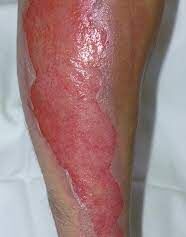
Causes of burns
They can occur due to various factors, including:
- Thermal Sources: Contact with hot objects, flames, steam, or hot liquids like boiling water or oil can cause thermal burns. These are among the most common causes of burns in household accidents, workplace incidents, and cooking mishaps.
- Chemical Exposure: Contact with corrosive chemicals such as acids, alkalis, solvents, or strong cleaning agents can lead to chemical burns. These burns can occur at home, in laboratories, industrial settings, or during accidents involving hazardous materials.
- Electrical Current: Exposure to electric currents from outlets, appliances, power lines, or lightning strikes can result in electrical burns. These burns may cause damage not only to the skin but also to internal tissues and organs.
- Radiation: Prolonged exposure to ultraviolet rays from the sun or X-rays from medical procedures can cause radiation burns. These burns damage the skin and underlying tissues and are commonly seen in individuals who spend excessive time in the sun without protection or those undergoing radiation therapy for medical conditions.
- Friction: Friction burns occur when the skin rubs against a rough surface repeatedly or forcefully. These burns are common in accidents involving road rash, rope burns, or machinery.
-
Cold Temperatures: Extreme cold can also cause burns, known as frostbite, by freezing the skin and underlying tissues. Frostbite typically affects exposed areas like fingers, toes, ears, and nose in cold weather conditions.
Types of burns
These are classified into several types based on their severity and the depth of tissue damage. The main types include:
- First-Degree Burn:
 These are superficial burns that affect only the outer layer of the skin (epidermis). They typically cause redness, minor swelling, and pain. Examples include sunburns and brief contact with hot objects or liquids. Treatment for first-degree burns includes running cool water over the affected area for a few minutes, or using a cold compress. Over-the-counter medications such as ibuprofen can also help to reduce pain and swelling. In some cases, a doctor may prescribe a topical ointment or antibiotic.
These are superficial burns that affect only the outer layer of the skin (epidermis). They typically cause redness, minor swelling, and pain. Examples include sunburns and brief contact with hot objects or liquids. Treatment for first-degree burns includes running cool water over the affected area for a few minutes, or using a cold compress. Over-the-counter medications such as ibuprofen can also help to reduce pain and swelling. In some cases, a doctor may prescribe a topical ointment or antibiotic. - Second-Degree Burn:
 These burns affect both the outer layer of the skin (epidermis) and the underlying layer (dermis). They cause redness, swelling, blistering, and severe pain. Second-degree burns can result from exposure to flames, hot liquids, or prolonged contact with hot surfaces. Symptoms of second-degree burns include intense pain, swelling, blisters, and redness. With proper medical attention and treatment, these burns can heal within a few weeks, although they may leave permanent scars. It is important to seek medical attention immediately if you experience a second-degree burn.
These burns affect both the outer layer of the skin (epidermis) and the underlying layer (dermis). They cause redness, swelling, blistering, and severe pain. Second-degree burns can result from exposure to flames, hot liquids, or prolonged contact with hot surfaces. Symptoms of second-degree burns include intense pain, swelling, blisters, and redness. With proper medical attention and treatment, these burns can heal within a few weeks, although they may leave permanent scars. It is important to seek medical attention immediately if you experience a second-degree burn. - Third-Degree Burn:
 Also known as full-thickness burns, these injuries extend through the entire thickness of the skin, affecting deeper tissues such as nerves, blood vessels, and muscles. Third degree burns are one of the most serious types of burns that can occur. The skin is destroyed, often leading to a white or blackened appearance, and the tissue beneath the skin is also damaged. Treatment for third degree burns can include skin grafts, surgery, and medication, as well as therapy for any resulting psychological trauma. Long-term effects of third-degree burns can include scarring, permanent nerve damage, and even disability, so it is important to seek medical attention immediately after any burn.
Also known as full-thickness burns, these injuries extend through the entire thickness of the skin, affecting deeper tissues such as nerves, blood vessels, and muscles. Third degree burns are one of the most serious types of burns that can occur. The skin is destroyed, often leading to a white or blackened appearance, and the tissue beneath the skin is also damaged. Treatment for third degree burns can include skin grafts, surgery, and medication, as well as therapy for any resulting psychological trauma. Long-term effects of third-degree burns can include scarring, permanent nerve damage, and even disability, so it is important to seek medical attention immediately after any burn. -
Fourth-Degree Burn:
 These are the most severe type of burns, involving damage to all layers of the skin as well as underlying tissues, muscles, and bones. Fourth-degree burns often result from prolonged exposure to extreme heat, such as flames or electrical currents. This type of burn injury can be caused by exposure to extreme heat, such as flames or boiling water, or by electrical or chemical contact. Symptoms of a 4th degree burn may include charred or blackened skin, deep tissue damage, and numbness or loss of sensation in the affected area. Treatment for a 4th degree burn often involves prompt medical attention, including hospitalization, debridement to remove damaged tissue, and skin grafting to promote healing and prevent infection.
These are the most severe type of burns, involving damage to all layers of the skin as well as underlying tissues, muscles, and bones. Fourth-degree burns often result from prolonged exposure to extreme heat, such as flames or electrical currents. This type of burn injury can be caused by exposure to extreme heat, such as flames or boiling water, or by electrical or chemical contact. Symptoms of a 4th degree burn may include charred or blackened skin, deep tissue damage, and numbness or loss of sensation in the affected area. Treatment for a 4th degree burn often involves prompt medical attention, including hospitalization, debridement to remove damaged tissue, and skin grafting to promote healing and prevent infection.
Home management of burns involves immediate first aid and ongoing care to promote healing and prevent complications. Here are a few home managements:
- Quickly assess the severity of the burn. For minor burns, such as first-degree burns, home care may be sufficient. For more severe burns, seek medical attention immediately.
- Cooling the Burn: Immediately cool the burn with cool (not cold) running water for 10-20 minutes or until pain subsides. Do not use ice or ice water, as it can further damage the skin.
- Remove Clothing and Jewelry: Remove any clothing or jewelry near the burn site, unless it is stuck to the skin. This prevents further injury if there is swelling.
- Cover the Burn: After cooling, cover the burn with a clean, dry cloth or sterile gauze to protect it from dirt and germs.
- Pain Management: Over-the-counter pain relievers like ibuprofen or acetaminophen can help manage pain and reduce inflammation.
- Avoid Home Remedies: Do not apply butter, oil, or other home remedies to the burn, as they can trap heat and increase the risk of infection.
- Protect from Infection: Keep the burn clean and dry. Do not pop blisters, as this can increase the risk of infection. If a blister breaks, clean the area with mild soap and water, then apply an antibiotic ointment and cover with a sterile dressing.
- Watch for Signs of Infection: Monitor the burn for signs of infection, such as increased redness, swelling, pain, or oozing. Seek medical attention if signs of infection develop.
- Seek Medical Attention: For more severe burns, or if you are unsure about the severity of the burn, seek medical attention immediately. This includes second-degree burns larger than three inches in diameter, third-degree burns, burns on the face, hands, feet, or genitals, and burns caused by chemicals or electricity.
-
Follow-up Care: Follow any instructions given by a healthcare professional and attend follow-up appointments as needed. Continue to monitor the burn for signs of infection and seek medical attention if necessary.
Treatment of burns
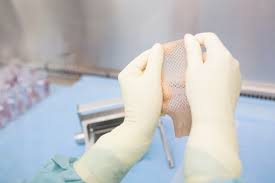
Treatment depends on the severity and depth of the burn injury. Here are some common approaches to treating burns:
- In medical settings, healthcare professionals will clean the burn thoroughly to remove debris and dead tissue. They may apply antibiotic ointments or creams to prevent infection and then cover the burn with sterile dressings.
- Depending on the severity of the burn, healthcare providers may prescribe stronger pain medications to manage discomfort during the healing process.
- Severe burns can cause fluid loss and electrolyte imbalances. In such cases, intravenous (IV) fluids may be administered to maintain hydration and restore electrolyte balance.
- Regular cleaning and dressing changes are essential to prevent infection and promote healing. Healthcare providers may recommend specific wound care products or techniques based on the type and severity of the burn.
- After burns have healed, physical therapy or occupational therapy may be necessary to improve mobility, strength, and function in the affected area.
- Coping with burn injuries can be emotionally challenging. Patients may benefit from counseling or support groups to address psychological issues and adjust to life after the injury.
- For deep or extensive burns, skin grafting may be necessary to replace damaged skin with healthy skin from another part of the body (autograft) or from a donor (allograft). Skin grafts are a popular and effective method of treating skin injuries and restoring damaged skin. This involves taking healthy skin from one area of the body and transferring it to another area, allowing the injured area to heal quickly and reduce scarring. This can be used to treat complex wounds, burns, and other skin problems.
- Plastic surgery is a growing field of medical science that enables individuals to improve their physical appearance and alter their facial and body features. Through the use of surgical procedures, individuals can make changes to their bodies to more closely resemble their desired image. These changes can range from minor modifications such as wrinkles and scars to more dramatic changes such as face lifts and breast augmentation. Plastic surgery can have both physical and emotional benefits, and is becoming increasingly popular as more people become aware of the possibilities.
- Aloe vera is widely known for its soothing and healing properties, making it a popular natural remedy for treating burns. Here’s how aloe vera can help with burns:

- Cooling Effect: Aloe vera gel has a naturally cooling sensation when applied to the skin, which can help alleviate the immediate pain and discomfort associated with burns. This cooling effect provides relief by reducing inflammation and soothing the affected area.
- Moisturization: Burned skin tends to become dry and dehydrated, leading to further discomfort and potential complications. Aloe vera gel is highly moisturizing and helps hydrate the skin, preventing it from becoming excessively dry and promoting faster healing.
- Anti-Inflammatory Properties: Aloe vera contains compounds such as glycoproteins and polysaccharides that possess anti-inflammatory properties. These compounds help reduce inflammation in the burned area, which is crucial for minimizing swelling, redness, and discomfort.
- Promotes Healing: Aloe vera gel contains enzymes, vitamins, minerals, and amino acids that support the skin’s natural healing process. It stimulates the production of collagen, a protein essential for skin regeneration, thereby promoting faster wound healing and reducing the risk of scarring.
- Antimicrobial Action: Burned skin is vulnerable to infection due to compromised barrier function. Aloe vera has natural antimicrobial properties that help protect the burn wound from harmful bacteria, reducing the risk of infection and promoting a sterile environment for healing.
- Reduces Itching and Peeling: As burns heal, the skin may become itchy and start to peel. Aloe vera gel can help alleviate itching and prevent excessive peeling by keeping the skin hydrated and nourished.
- To use aloe vera for burns, simply apply a generous amount of pure aloe vera gel directly to the affected area. You can extract the gel directly from the leaves of the aloe vera plant or use commercially available aloe vera gel products. Reapply the gel several times a day as needed for relief and continue until the burn has healed completely. However, for severe burns or burns covering a large area of the body, it’s essential to seek medical attention promptly.
Complications of burns
Complications can vary depending on the severity and extent of the injury. Here are some potential complications:
- Infection: Burned skin is more susceptible to bacterial infections due to compromised barrier function. Infections can lead to delayed healing, increased pain, and systemic illness if left untreated. Prompt treatment with antibiotics may be necessary to prevent or manage infections.
- Fluid Loss and Dehydration: Severe burns can cause fluid loss through damaged skin, leading to dehydration and electrolyte imbalances. Intravenous fluids may be required to maintain hydration and electrolyte balance, especially in cases of extensive burns.
- Hypovolemic Shock: Large burns can result in hypovolemic shock, a life-threatening condition characterized by inadequate tissue perfusion due to severe fluid loss. This can lead to organ failure and death if not promptly treated with fluid resuscitation and supportive care.
- Scarring and Contractures: As burns heal, scar tissue may form, resulting in permanent changes to the skin’s texture and appearance. In severe cases, scar tissue can cause contractures, where the skin becomes tight and restricts movement of joints and limbs.
- Loss of Function: Burns affecting joints, muscles, or nerves can result in loss of function and mobility in the affected area. Rehabilitation and physical therapy may be necessary to restore function and improve quality of life.
- Psychological Impact: Burn injuries can have a significant psychological impact on individuals, leading to feelings of anxiety, depression, and post-traumatic stress disorder (PTSD). Counseling and support services may be beneficial for coping with the emotional aftermath of burn injuries.
- Respiratory Complications: Inhalation of hot gases or smoke during a fire can cause respiratory injuries such as smoke inhalation, carbon monoxide poisoning, or airway burns. These complications can lead to respiratory distress, pneumonia, or acute respiratory distress syndrome (ARDS).
-
Complications in Special Populations such as children, elderly individuals, and individuals with pre-existing medical conditions, may be at higher risk of complications from burns due to factors such as immature or compromised immune systems, reduced mobility, and comorbidities.
Signs of infection in a burn wound may include:
- Increased Redness: If the redness around the burn area spreads or becomes more intense, it could indicate an infection.
- Swelling: Swelling that worsens or persists beyond the initial stages of healing may suggest an infection.
- Pain: Increasing pain or discomfort, especially if it is accompanied by other symptoms, could be a sign of infection.
- Heat: The affected area may feel warmer to the touch than the surrounding skin.
- Pus or Discharge: The presence of pus, cloudy fluid, or foul-smelling discharge from the burn wound is a clear sign of infection.
- Fever: A fever (temperature above 100.4°F or 38°C) accompanied by other signs of infection indicates a systemic response to infection.
- Chills: Shivering or feeling cold when others around you are not could be a sign of systemic infection.
- Increased Pain or Discomfort: If the pain or discomfort associated with the burn increases rather than decreases over time, it may be due to an infection.
- Delayed Healing: A burn wound that does not show signs of improvement or healing over time may be infected.
- Red Streaks: Red streaks extending from the burn wound towards the lymph nodes may indicate an infection spreading through the lymphatic system.
- Odor: An unpleasant odor emanating from the burn wound may indicate bacterial growth and infection.
How to prevent burns
Consider the following safety measures:
- Fire Safety: Install smoke detectors in your home and check them regularly. Have a fire escape plan and practice fire drills with your family. Keep flammable materials away from heat sources and teach children about fire safety.
- Kitchen Safety: Use oven mitts or pot holders when handling hot items. Keep pot handles turned inward on the stove to prevent accidental spills. Supervise children in the kitchen and teach them about the dangers of hot surfaces and liquids.
- Hot Water Safety: Set your water heater temperature to 120°F (49°C) or lower to prevent scald burns. Test bathwater before bathing children or stepping into the shower. Always supervise young children around water.
- Electrical Safety: Inspect electrical cords for damage and replace frayed or worn cords. Keep electrical appliances away from water sources. Use outlet covers and keep cords out of reach of children.
- Sun Protection: Wear sunscreen with a high SPF and reapply it regularly, especially when spending time outdoors. Wear protective clothing, hats, and sunglasses to shield your skin from the sun’s harmful rays.
- Chemical Safety: Store household chemicals, cleaners, and other hazardous substances out of reach of children and pets. Use caution when handling chemicals and follow safety instructions on product labels.
- Workplace Safety: Follow safety protocols and wear appropriate protective gear in hazardous work environments. Attend workplace safety training sessions and report any safety hazards or concerns to your employer.
- Vehicle Safety: Use caution when handling hot surfaces in and around vehicles, such as engines, exhaust pipes, and car seats. Always check seat belts and car seats for signs of damage and ensure they are properly installed and used.
- Outdoor Safety: Use caution when working with outdoor grills, campfires, and other open flames. Keep a safe distance from fire pits and bonfires, and never leave them unattended. Teach children about the dangers of playing with matches and lighters.
When to seek urgent medical care
It is important to know when to seek urgent medical care, as delaying appropriate treatment can lead to further health complications. If you experience any of the following symptoms, you should seek medical help immediately. If you have any doubts about whether you should seek medical care, it is always better to err on the side of caution and consult with your doctor.
Seek urgent medical care for burns in the following situations:
- Severe Burns: For burns that cover a large area of the body, especially if they are deep or involve the face, hands, feet, or genitals.
- Third-Degree Burns: Any burn that penetrates all layers of the skin requires immediate medical attention.
- Electrical or Chemical Burns: Burns caused by electricity or chemicals are especially dangerous and should be evaluated by a healthcare professional.
- Inhalation Injury: If a burn victim has difficulty breathing, coughing, or shows signs of smoke inhalation, seek medical help immediately.
- Signs of Shock such as rapid heartbeat, shallow breathing, pale or clammy skin, and confusion, require urgent medical attention.
- Burns on Young Children or Older Adults: Infants, young children, and older adults are more vulnerable to burns and may require medical evaluation even for minor burns.
- Signs of Infection: If a burn wound becomes red, swollen, warm to the touch, or starts oozing pus, it may be infected and requires medical attention.
- Burns with Systemic Symptoms: Fever, chills, nausea, vomiting, or other signs of systemic illness following a burn injury may indicate infection or other complications requiring medical evaluation.
- Burns Caused by Explosions or High-Speed Collisions: Burns sustained in explosions or high-speed collisions may be associated with other traumatic injuries and require immediate medical attention.
-
Burns in Pregnant Women or Individuals with Chronic Health Conditions: Special consideration should be given to pregnant women and individuals with chronic health conditions, as burns can have serious implications for both the patient and the developing fetus.
Disclaimer: The information provided in this content is for general informational purposes only. It is not intended as medical or healthcare advice, diagnosis, or treatment. Always seek the advice of a qualified healthcare professional with any questions you may have regarding a medical condition or healthcare decisions.


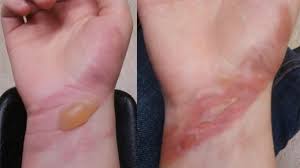 These are superficial burns that affect only the outer layer of the skin (epidermis). They typically cause redness, minor swelling, and pain. Examples include sunburns and brief contact with hot objects or liquids. Treatment for first-degree burns includes running cool water over the affected area for a few minutes, or using a cold compress. Over-the-counter
These are superficial burns that affect only the outer layer of the skin (epidermis). They typically cause redness, minor swelling, and pain. Examples include sunburns and brief contact with hot objects or liquids. Treatment for first-degree burns includes running cool water over the affected area for a few minutes, or using a cold compress. Over-the-counter 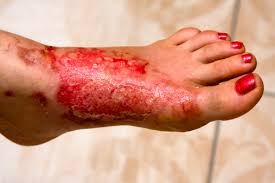 These burns affect both the outer layer of the skin (epidermis) and the underlying layer (dermis). They cause redness, swelling, blistering, and severe pain. Second-degree burns can result from exposure to flames, hot liquids, or prolonged contact with hot surfaces. Symptoms of second-degree burns include intense pain, swelling, blisters, and redness. With proper medical attention and treatment, these burns can heal within a few weeks, although they may leave permanent scars. It is important to seek medical attention immediately if you experience a second-degree burn.
These burns affect both the outer layer of the skin (epidermis) and the underlying layer (dermis). They cause redness, swelling, blistering, and severe pain. Second-degree burns can result from exposure to flames, hot liquids, or prolonged contact with hot surfaces. Symptoms of second-degree burns include intense pain, swelling, blisters, and redness. With proper medical attention and treatment, these burns can heal within a few weeks, although they may leave permanent scars. It is important to seek medical attention immediately if you experience a second-degree burn.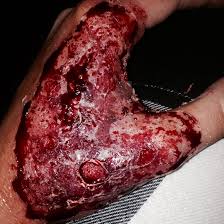 Also known as full-thickness burns, these injuries extend through the entire thickness of the skin, affecting deeper tissues such as nerves, blood vessels, and muscles. Third degree burns are one of the most serious types of burns that can occur. The skin is destroyed, often leading to a white or blackened appearance, and the tissue beneath the skin is also damaged. Treatment for third degree burns can include skin grafts, surgery, and medication, as well as therapy for any resulting psychological trauma. Long-term effects of third-degree burns can include scarring, permanent nerve damage, and even disability, so it is important to seek medical attention immediately after any burn.
Also known as full-thickness burns, these injuries extend through the entire thickness of the skin, affecting deeper tissues such as nerves, blood vessels, and muscles. Third degree burns are one of the most serious types of burns that can occur. The skin is destroyed, often leading to a white or blackened appearance, and the tissue beneath the skin is also damaged. Treatment for third degree burns can include skin grafts, surgery, and medication, as well as therapy for any resulting psychological trauma. Long-term effects of third-degree burns can include scarring, permanent nerve damage, and even disability, so it is important to seek medical attention immediately after any burn.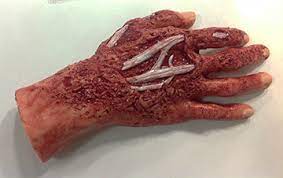 These are the most severe type of burns, involving damage to all layers of the skin as well as underlying tissues, muscles, and bones. Fourth-degree burns often result from prolonged exposure to extreme heat, such as flames or electrical currents. This type of burn injury can be caused by exposure to extreme heat, such as flames or boiling water, or by electrical or chemical contact. Symptoms of a 4th degree burn may include charred or blackened skin, deep tissue damage, and numbness or loss of sensation in the affected area. Treatment for a 4th degree burn often involves prompt medical attention, including hospitalization, debridement to remove damaged tissue, and skin grafting to promote healing and prevent infection.
These are the most severe type of burns, involving damage to all layers of the skin as well as underlying tissues, muscles, and bones. Fourth-degree burns often result from prolonged exposure to extreme heat, such as flames or electrical currents. This type of burn injury can be caused by exposure to extreme heat, such as flames or boiling water, or by electrical or chemical contact. Symptoms of a 4th degree burn may include charred or blackened skin, deep tissue damage, and numbness or loss of sensation in the affected area. Treatment for a 4th degree burn often involves prompt medical attention, including hospitalization, debridement to remove damaged tissue, and skin grafting to promote healing and prevent infection.